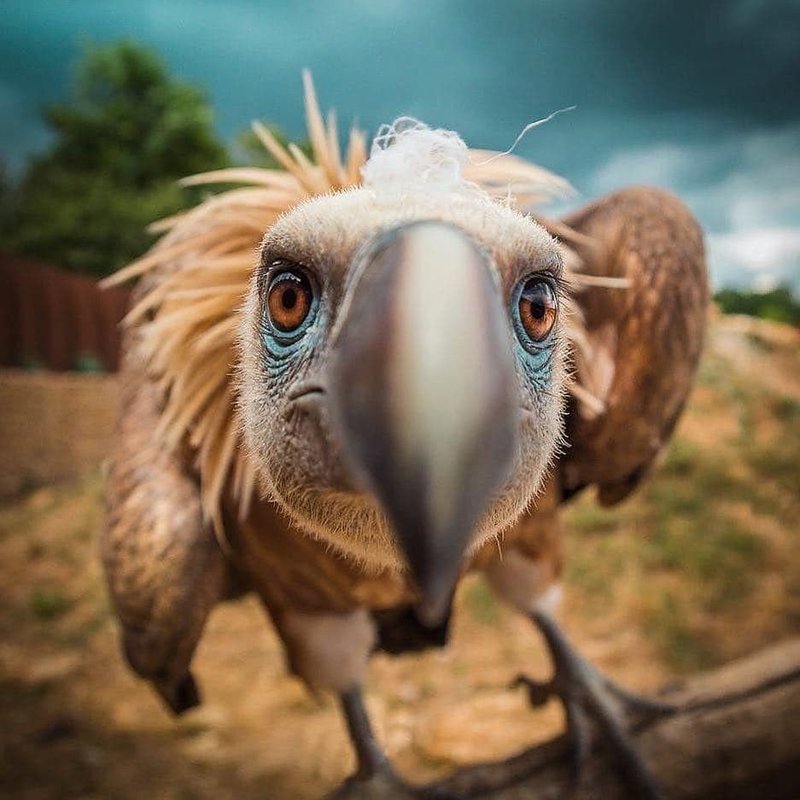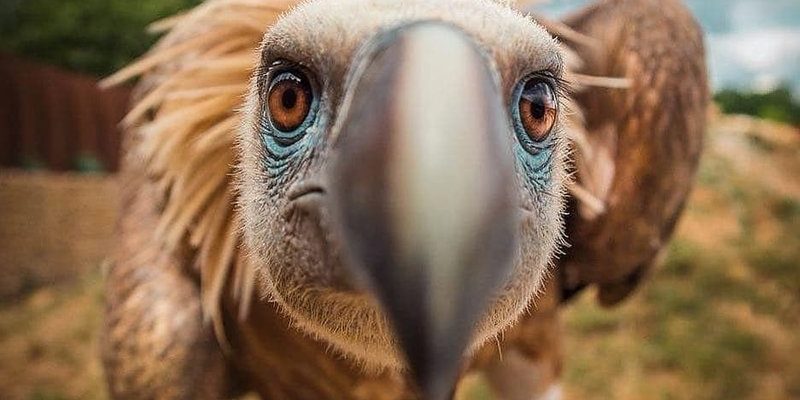
Vultures are often misunderstood. They’re not just scavengers; they are nature’s clean-up crew. Their ability to consume dead animals helps prevent the spread of disease. Think of them as the forest’s recycling system. So, whether you’re out for a hike, exploring a nature reserve, or just enjoying the great outdoors, it’s important to know how to behave if you cross paths with one of these feathered scavengers.
In this guide, we’re diving into what to do if you encounter a vulture in the wild, covering everything from identifying them to understanding their behavior. You might even find yourself with a new respect for these unique birds!
Understanding Vultures and Their Behavior
Let’s start with the basics. Vultures belong to a family of birds known as Accipitridae. You might encounter two main types in North America: the turkey vulture and the black vulture. Turkey vultures have a reddish head and a distinctive flight pattern, while black vultures have a blackish head and a more robust build. Knowing who you’re dealing with can help you respond appropriately.
Vultures are often seen soaring in the sky, using their keen eyesight to spot potential food from high above. Here’s the thing: they’re not aggressive. If you spot one, it’s likely just minding its own business, searching for dinner. Understanding this behavior is key. They are scavengers by nature, so they’re not out for a chase. If you see one on the ground, it might be feeding or resting, so it’s best to keep your distance.
Vultures also have a unique way of communicating. They use body language like wing flapping to signal their feelings. If a vulture feels threatened, it might puff up or hiss to warn you off. This is their way of saying, “Hey, I’m here, and I’m not looking for trouble.” Respecting these signals can keep you safe during your encounter.
Staying Calm During a Vulture Encounter
If you do find yourself face-to-face with a vulture, the first thing to do is stay calm. I know, easier said than done, right? But here’s the deal: vultures can sense your energy. If you panic or make sudden movements, they might feel threatened, which can lead to an unnecessary confrontation.
Instead, take a deep breath and observe the situation. Are the vultures alone, or are they in a group? Are they eating? Understanding their behavior can help you gauge how to proceed. If they seem relaxed and are just doing their thing, you can quietly enjoy the experience from a distance.
It’s also wise to avoid making loud noises or sudden movements. Remember, these birds might be used to humans, but they’re still wild animals. Treating them with respect will help you create a peaceful interaction. Plus, who knows—you might learn something fascinating about them just by watching!
Keeping Your Distance: A Respectful Approach
When you encounter a vulture, one of the most important things to remember is to maintain a safe distance. Vultures might look big and intimidating, but they’re not interested in you. They would much rather keep to themselves.
So, how far is “far enough”? A good rule of thumb is to stay at least 50 yards away. This distance allows you to observe their behavior without causing stress. If you’re using binoculars or a camera, zoom in from a distance instead of approaching them.
If you see a vulture feeding, give it even more space. It’s hard work for them to find food, and interrupting their meal can be stressful. Plus, you don’t want to get too close to a feeding vulture. They might have a nasty surprise for you if they feel threatened!
What Happens If You’re Attacked?
Let’s address a common fear: what if a vulture attacks? Honestly, this is very rare. Vultures are generally shy and will avoid confrontation if they can. However, if a vulture feels cornered or threatened, they might react defensively. Luckily, there are steps you can take to minimize this risk.
If you feel a vulture is being aggressive, it’s important to back away slowly. Remember, vultures can be curious, and they might just be trying to assess whether you’re a threat. As you back away, avoid eye contact and keep your movements slow and steady.
In the unlikely event that a vulture does make contact, try to protect your head and face. They have sharp beaks, and their claws can be strong. It’s also important to report the incident to local wildlife authorities afterward—especially if the bird seems sick or injured. They can assess the situation and provide help if needed.
Helping Vultures: What You Can Do
Although encountering a vulture can be a neat experience, there are things you can do to help these remarkable birds thrive. First, let’s talk about their habitat. Vultures often need open spaces to fly and find food. If you’re in an area that supports wildlife, consider participating in local conservation efforts.
Don’t feed vultures. It might be tempting to toss them food, especially if you see them perched nearby, but this can disrupt their natural behaviors and diet. Instead, focus on supporting their ecosystems by cleaning up waste and trash in your environment. Less pollution means healthier wildlife habitats!
If you see a vulture in distress—perhaps it’s injured or in a dangerous situation—don’t try to handle it yourself. Contact a local wildlife rescue organization; they have the training and resources to help.
Final Thoughts: Embracing Nature’s Scavengers
Encountering a vulture in the wild can be an amazing experience. These birds, often misunderstood, play a crucial role in our ecosystem. By keeping a safe distance, staying calm, and respecting their space, you can enjoy the moment without causing unnecessary stress for the bird.
Remember, vultures are an important part of nature’s balance. They help clean up our environment, and by understanding how to interact with them safely, you’re contributing to the preservation of wildlife. So, the next time you’re out in nature and spot a vulture, take a moment to appreciate its unique beauty and the role it plays in our world. Happy hiking!

